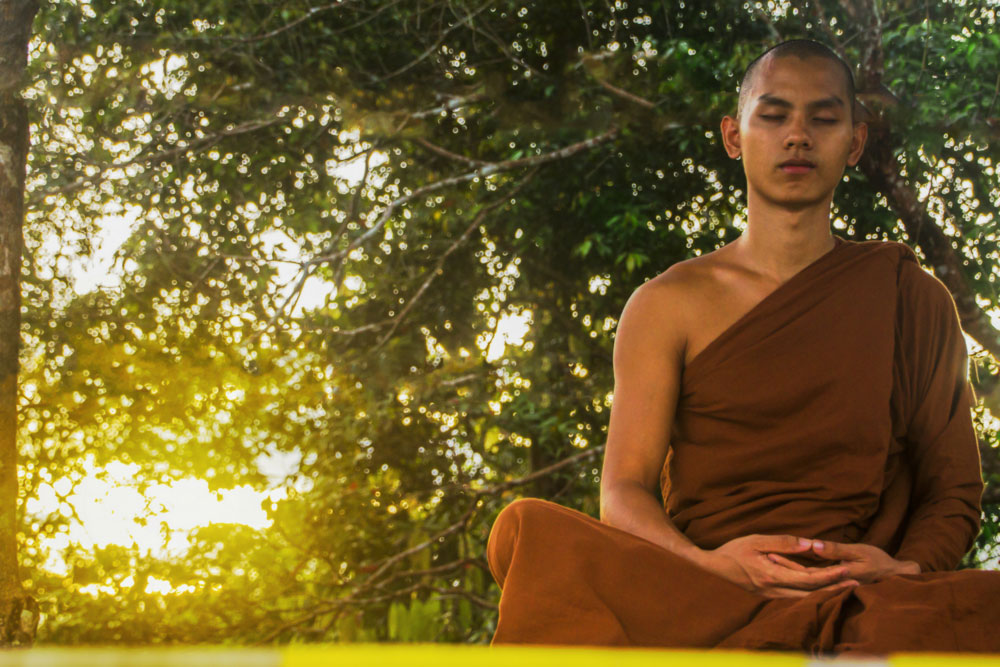Why do Buddhists Meditate?
In Buddhism, meditation is one of the pivots of the religion. It is practiced in different forms. Indeed, these aspects of meditation often create confusion for some Buddhist practitioners and for many non-Buddhists.
General information on meditation
The term meditation means "to accustom the mind. It is a broad definition which indicates that meditation is not specific to Buddhism. Anyone can practice meditation regardless of their religion, origin, beliefs or continent. Moreover, meditation contains a meaning that goes beyond simply escaping the reality of everyday life or the emptiness of the mind and freeing the mind from negative thoughts.
This practice is mental in nature and consists of calming consciousness, calming the mind, relieving stress and depression, enhancing sleep, improving concentration, stabilizing cardiovascular health and preventing premature aging and obesity. These are the objects of meditation from a general point of view.
A meditation session can last between 10 and 15 minutes and during this session, the person practicing it must have total concentration and must detach himself from his external environment. The two most common types of meditation are mindfulness meditation and transcendental meditation.
What is mindfulness meditation?
The English translation of the term "Mindfulness" is "mindfulness". This describes the anchoring of concentration on the present moment in an objective, lucid and above all calm manner. In addition, without realizing it, everyone participates from time to time in the experience of mindfulness. Meditation plays a major role in this phase of concentration. It frees our mind from the flow of thoughts and enters a healing phase.
Today, this type of meditation is used for therapeutic purposes. This therapy is that of healing patients who suffer from illnesses related to psychological disorders such as chronic stress, anxiety and sometimes even heart disease. Because of its therapeutic aspect, meditation brings well-being to patients and for the same reason, many hospitals use this practice with the intervention of a meditation specialist. The most well known is the American Jon Kabat-Zinn, he has been traveling throughout America and Europe for several years to practice meditation in mindfulness.

What is transcendental meditation?
Maharishi Mahesh Yogi is the founder of the Transcendental Meditation Program and has made it accessible to everyone around the world. He was supervised by his master Swami Brahmananda Saraswati in the 1960s. His training is a lineage of Indian tradition and known today as a practice of pure spirituality. This type of meditation is ideal for those who are new to the practice because it is natural, pleasant and simple.
Learning transcendental meditation does not depend on profession, age or culture. It does not require any changes in diet, lifestyle or religious beliefs. It does not involve techniques chosen for personal development or other techniques. Like mindfulness meditation, transcendental meditation has many benefits, including health benefits. It reduces anxiety and stress and maintains the practitioner's mental and physiological balance.
What is the purpose of meditation in Buddhism?
When Buddhists meditate, the outward appearance that people see is peace. For Buddhists, meditation is a means, a tool to follow the path taken by Guatama Siddharta known as Buddha. Since his spiritual awakening, this monk has become the reference point for Buddhists and followers of Buddhist culture and practices. The Buddhist perspective of meditation is based on the habituation of the mind to rebirth, the complete liberation of samsara and awakening similar to that of Buddha.
Is this the only reason why Buddhists choose meditation? Certainly, the attainment of Nirvana, or ultimate truth, is the main goal of Buddhist meditation; but the quest for wisdom, peace and balance in life is also the priority of some practitioners. Indeed, meditation changes many daily habits and improves the quality of life of Buddhists and followers of this spirituality.
Is Buddhist meditation something to learn?
The main question is: can meditation be learned by itself or should one be assisted and advised by a master? The practice of Buddhist meditation is not only about concentration. Buddha even declared that concentration is an obstacle to the realization of the Dharma. Nevertheless, it can be learned. Here are some techniques to identify it even if you are a novice :
- Choose the lotus position or choose a sitting position that suits you and make sure you are comfortable in this position. This has an impact on the meditation itself ;
- Stabilize your breathing by taking a deep breath and try to hold it for a few seconds while charging the air in your lungs with thoughts of your anxiety, worries, problems, etc. Stay focused throughout this phase of the session and let your mind clear. At this precise moment, your body enters into a relationship with your mind. And finally, exhale gradually to evacuate all the burdens that weigh you down.
This is the course of a meditation, it should last between 10 and 15 minutes. However, it is important to maintain concentration throughout the meditation. For Buddhists, meditation has become more than a practice, it is a way of life that reminds them of the peace, wisdom and tranquility taught by their spiritual guide, Buddha.


